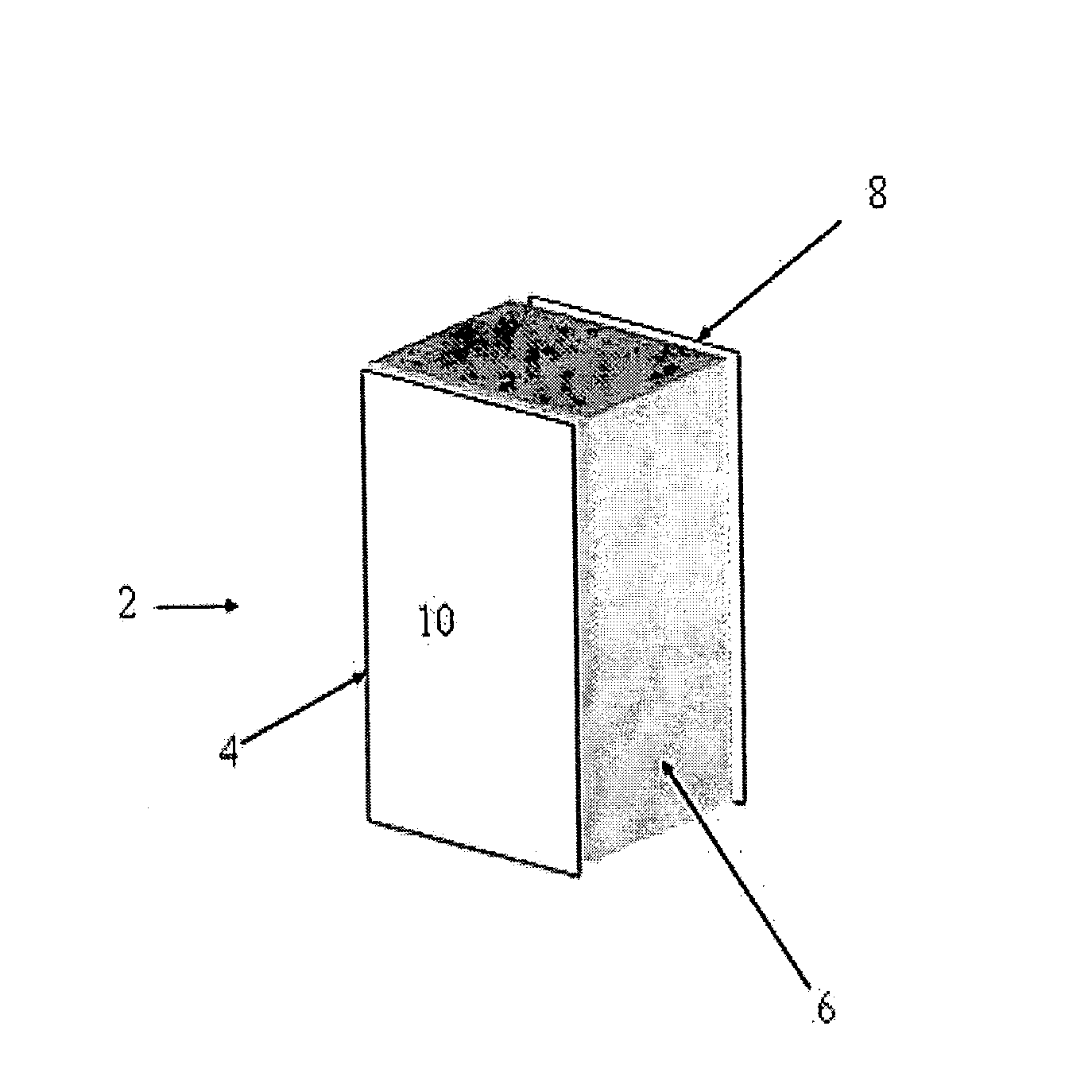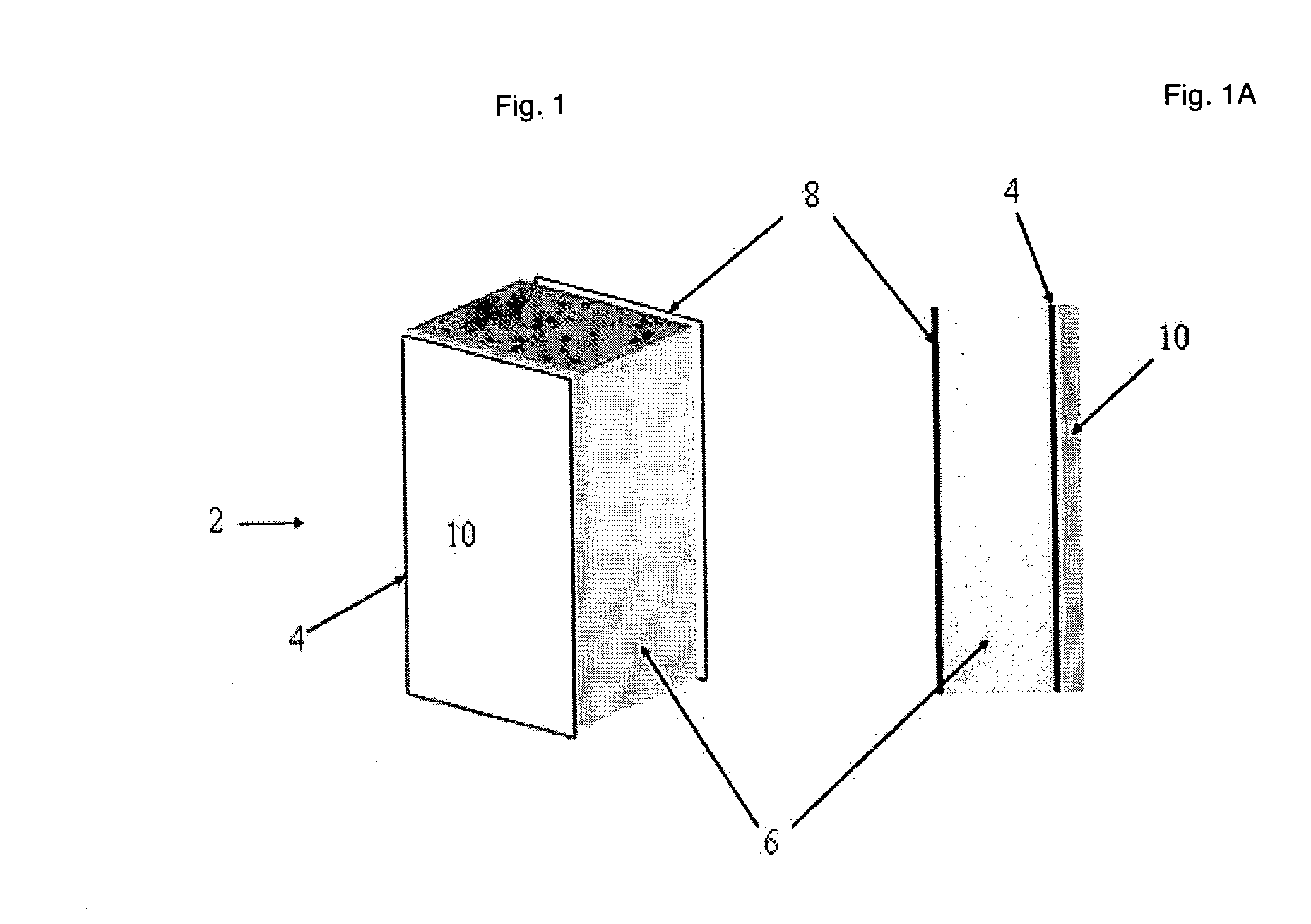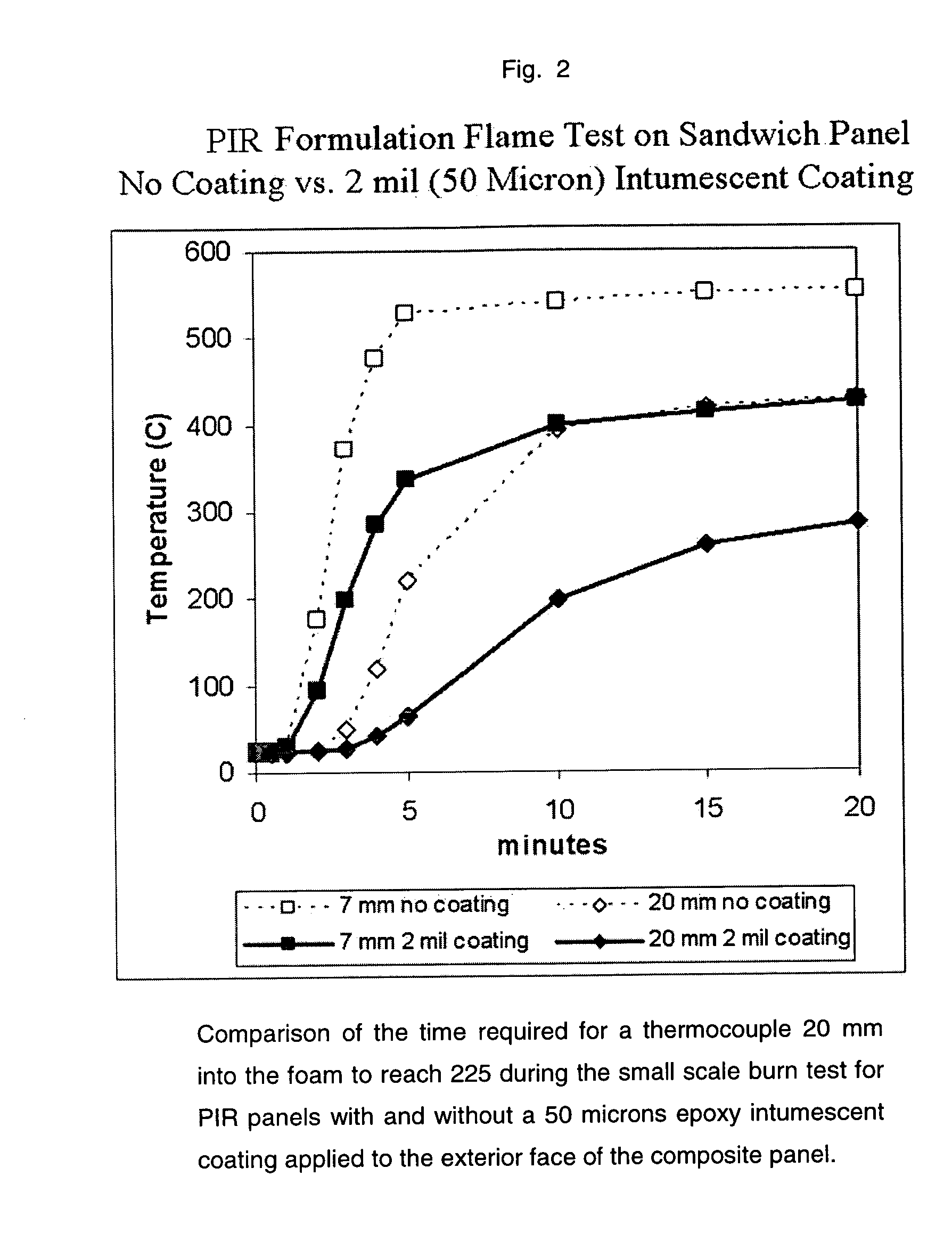Fire resistant insulated building panels utilizing intumescent coatings
a technology of intumescent coating and insulated building, which is applied in the direction of coatings, transportation and packaging, layered products, etc., can solve the problems of difficult formulation of composite foam panels, difficult implementation of formulation modifications, and the effect of affecting the overall flammability of composite foam panels
- Summary
- Abstract
- Description
- Claims
- Application Information
AI Technical Summary
Benefits of technology
Problems solved by technology
Method used
Image
Examples
example 1
PUR and PIR Foam Core Formulations Used for Examples
[0057] PUR and PIR foam core formulations were used to prepare the panels in subsequent examples. The PUR formulation incorporated 3.3% n-pentane by weight (total), and the PIR formulation incorporated 5.8% n-pentane by weight (total). Both formulations comprised a polyester polyol, a polyether polyol, a silicone polyether surfactant, water, an amine catalyst, and Fyrol PCF flame retardant. A 30.5 cm×30.5 cm×5.1 cm plaque mold heated to 43.3° C. was used to make the panels. The core density of the PUR or PIR foam was approximately 40 kg / m3, and the thermal conductivity was approximately 0.020 to 0.022 W / mK.
example 2
Preparation of an Uncoated Control Composite Panel
[0058] A 0.405 mm galvanized steel, 20.3 cm×20.3 cm facer was cleaned with acetone, placed in the bottom of a 30.5 cm×30.5 cm×5.1 cm plaque mold and heated to 43.3° C. A second steel facer was loosely fixed to the top of inside of the mold such that when a foam formulation was poured into the mold, the mold closed and a foam panel then would be formed. Approximately 250 g of foam formulation was poured on top of the bottom metal facer and the mold lid closed. After 10 minutes in the mold, the panel was removed and allowed to cure at room temperature for several days.
example 3
Preparation of a Composite Foam Panel Incorporating an Intumescent Coating on the Exterior Face of the Steel Facer
[0059] A 0.405 mm galvanized steel, 20.3 cm×20.3 cm substrate was cleaned with acetone, and then coated with an epoxy intumescent coating commercially available under the trademark CeaseFire (supplied by CoteL Industries) and a curing agent using a Bird bar. The coating was cured at 120° C. in air for 30 minutes, and then allowed to sit at room temperature for at least one day. The dry thickness of the intumescent coating was 2.0 (+ / −5 microns). The coated substrate was placed intumescent coated side down in a 30.5 cm×30.5 cm×5.1 cm plaque mold and heated to 43.3° C. A second steel facer was loosely fixed to the top of the inside of the mold such that when a foam formulation was poured into the mold, the mold could be closed and a foam panel would be formed between the interior face of each substrate. In this embodiment, then, the foam core faces the interior face of ea...
PUM
| Property | Measurement | Unit |
|---|---|---|
| thickness | aaaaa | aaaaa |
| temperature | aaaaa | aaaaa |
| height | aaaaa | aaaaa |
Abstract
Description
Claims
Application Information
 Login to View More
Login to View More - R&D
- Intellectual Property
- Life Sciences
- Materials
- Tech Scout
- Unparalleled Data Quality
- Higher Quality Content
- 60% Fewer Hallucinations
Browse by: Latest US Patents, China's latest patents, Technical Efficacy Thesaurus, Application Domain, Technology Topic, Popular Technical Reports.
© 2025 PatSnap. All rights reserved.Legal|Privacy policy|Modern Slavery Act Transparency Statement|Sitemap|About US| Contact US: help@patsnap.com



